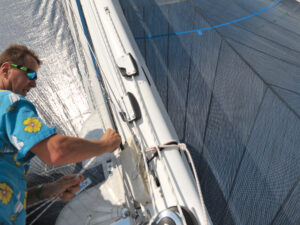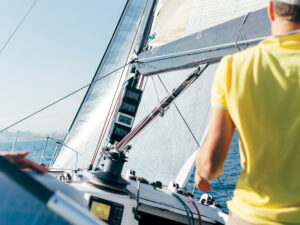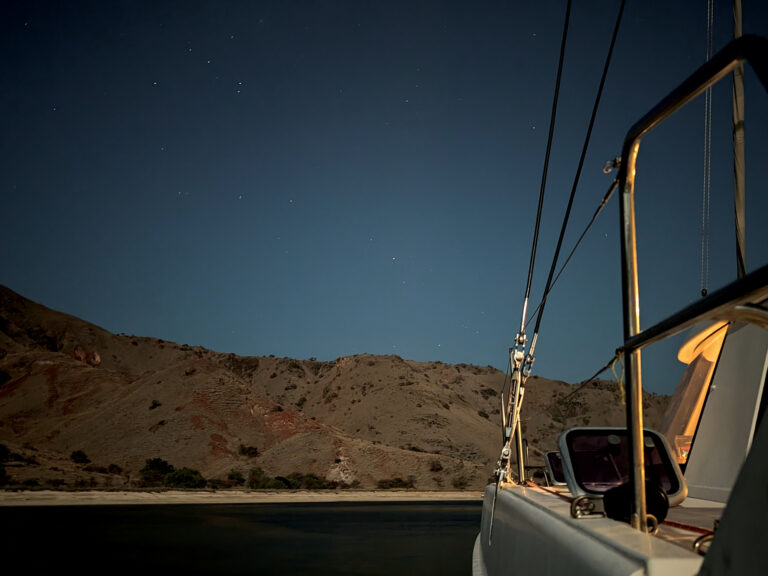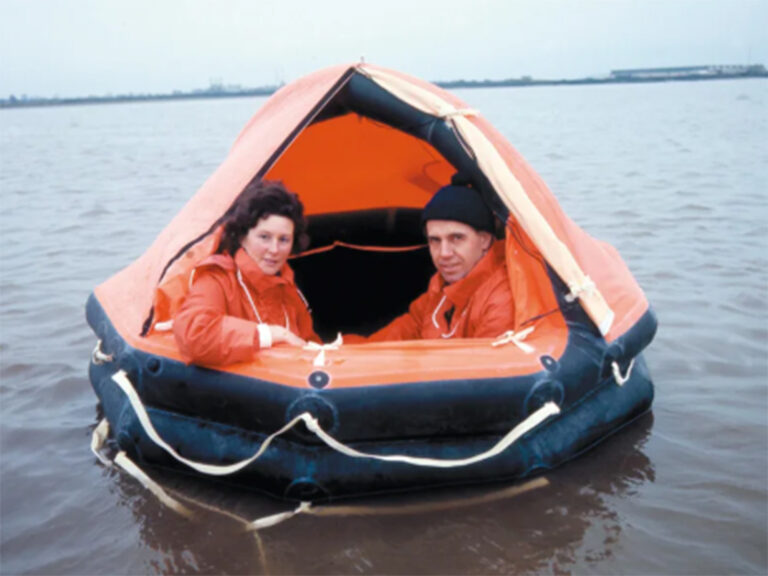
While on a recent high-latitude passage, I had ample opportunity to experience the phenomenon of condensation formation. From cabin windows to camera lenses, it seemed to be everywhere. However, when discussing condensation with vessel owners, I find there are a number of misconceptions regarding the source of the water that condenses on these surfaces, and how it can be prevented.
Condensation, the formation of water droplets on a surface, occurs when the air’s dew point — the point at which airborne water vapor condenses into liquid — is reached near the surface of a cold object. The effect is most obvious on an everyday basis when a cold can or bottle is removed from a refrigerator: Water condenses on the surface almost immediately. It’s also commonly seen in the form of dew, which forms on surfaces that cool quickly after sunset.
In an onboard application, one of the most challenging cool-weather condensation scenarios involves hatches and ports. Because glass and plastic, as well as metal frames, are poor insulators, they tend to closely mimic the outside air temperature. The cabin, on the other hand, is comparatively warm and, more important, the air is laden with water vapor from cooking, showers, wet clothes, respiration and perspiration. The humidity level in the cabin is often high, and when that air makes contact with hatches and ports, water condenses, often in copious quantities.
Yet another area where condensation manifests itself with all too maddening regularity is refrigeration systems. I recently inspected a vessel whose saloon joinerwork was badly discolored behind a settee’s vertical cushion. The wood abutted a freezer box, and upon closer inspection, I discovered that the insulation was wet to the touch and saturated with water, much like a sponge. But in this example lies the answer to the condensation riddle.
Insulation simply excludes or immobilizes air laden with water vapor; if that air cannot come into contact with a cold surface, it will not facilitate condensation. Once it absorbed water, the insulation around the freezer was rendered ineffective because water is a comparatively good conductor of heat or cold. In this case, the cold from inside the freezer was conducted to the wood behind the settee, whereupon the water condensed. When I pointed this out to the vessel’s owner, he said that he’d attempted, and failed, to resolve the problem by placing a sheet of plastic between the cushion and the bulkhead. Condensation simply formed on the plastic. The reason? The plastic neither excludes nor immobilizes air, and thus provides no insulating qualities.
So how do we address the problem? Simple: Insulation is the key to managing condensation. For cabin windows and hatches, inserting tightly fitted pieces of closed-cell foam insulation works well, although it makes things rather dark. (The tight fit is key, so they don’t become sodden.) Bubble wrap also works as well, and it emits light. The same technique can be used for overhead hatches, though the frames remain a challenge.
Where refrigeration is concerned, augmenting (or replacing if necessary) the insulation around built-in boxes, once again using closed-cell foam (either in blocks, or single- or two-part liquid foam), will nearly always yield noticeable, positive results. Insulating countertop pads can also be cut to fit the area over a horizontal reefer hatch.
As for photo lenses, bringing a chilly camera into a warm, moist cabin — or taking a camera from an air-conditioned space out into a tropical environment — is guaranteed to fog glass surfaces. In some cases, this will also occur inside the camera. The solution here is time, as temperature changes must be allowed to occur slowly. Leaving a camera in a camera bag or case, and allowing several hours for the temperature to stabilize, works well. If you need to quickly deal with condensation on an objective lens, you can hold it against your abdomen (with a T-shirt separating the glass from your skin), which will warm it quickly, preventing condensation from forming.
Steve D’Antonio offers services for boat owners and buyers through Steve D’Antonio Marine Consulting (stevedmarineconsulting.com).








